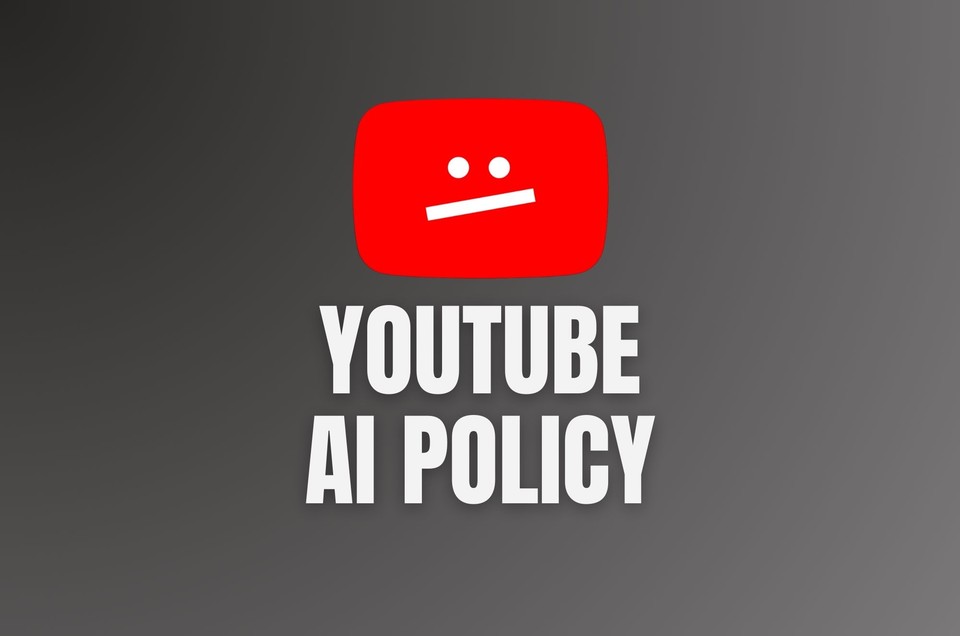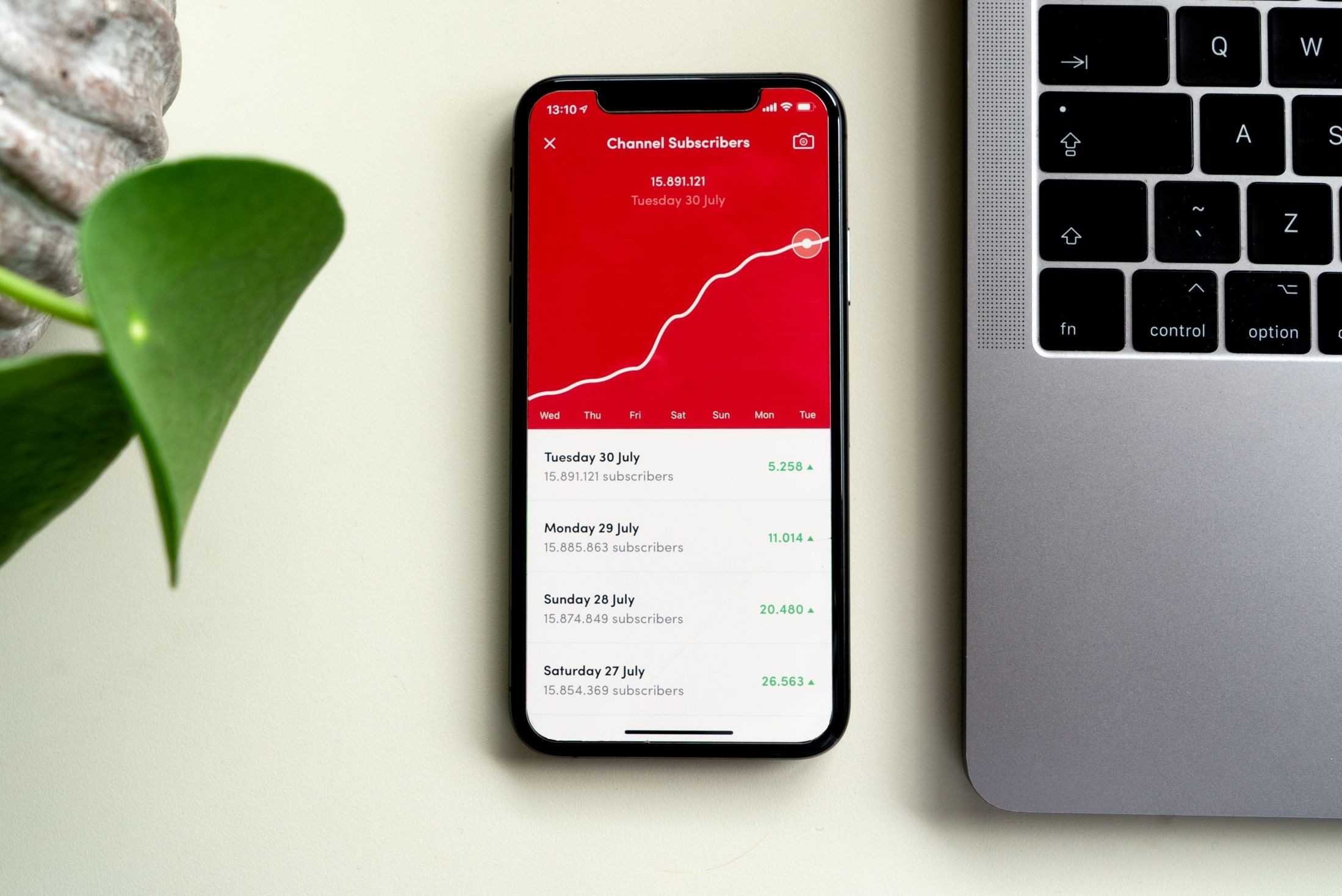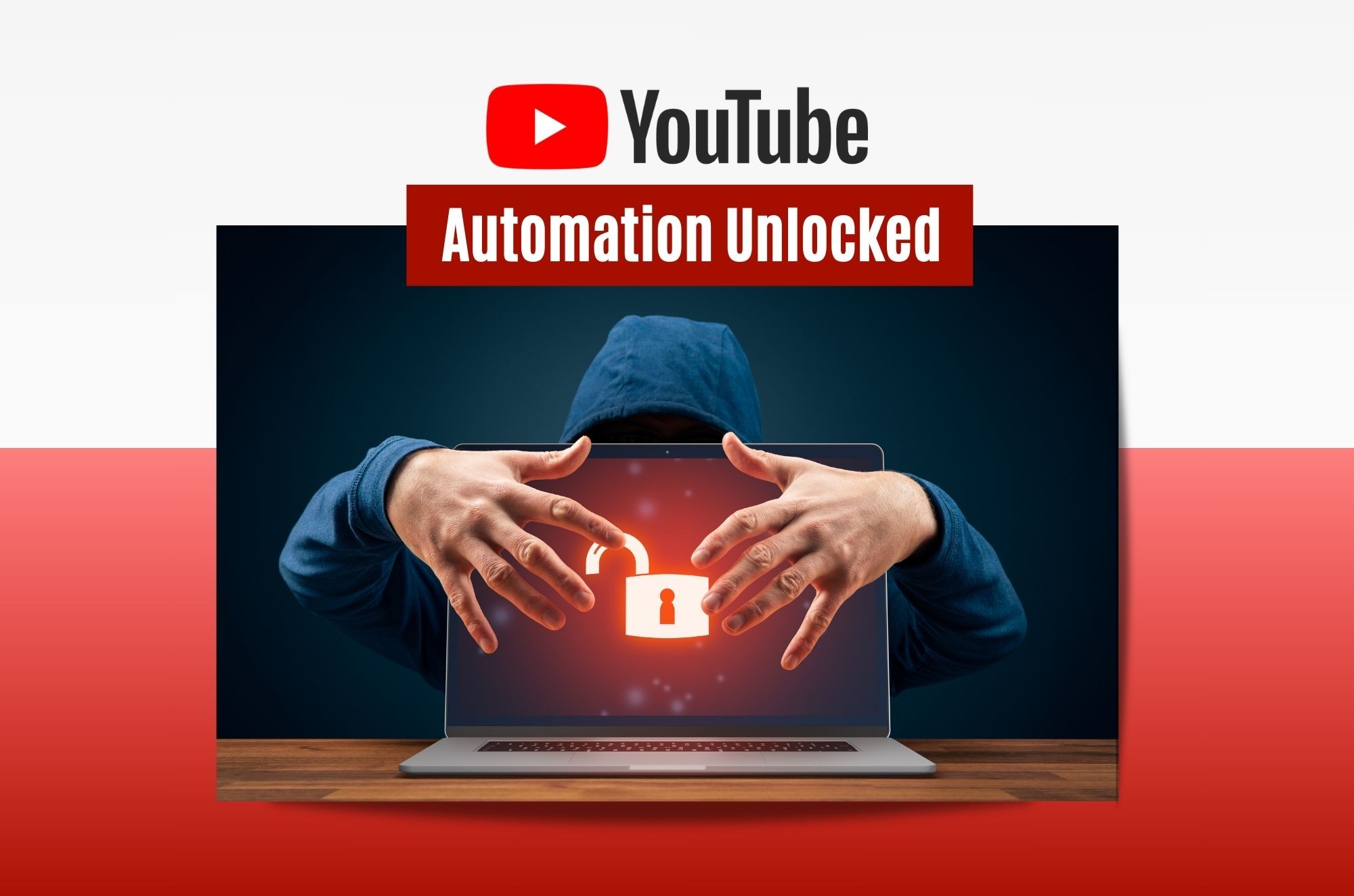Introduction
Did you know that YouTube has a whopping 2.49 billion users every month? That's a lot of folks watching videos! YouTube is the second most popular search engine and social media platform. But with so many videos floating around, knowing what's real and what's not is essential.
That's where YouTube's AI policy and new AI-generated content labeling tool come in. The tool is like a label for videos, letting creators tell viewers when something in their video is AI-generated. In this blog post, we'll explain the YouTube AI policy, the new AI-generated content labeling settings, what they mean for creators, and why they matter to everyone who watches videos on YouTube.

What is YouTube AI Policy?
YouTube has outlined a comprehensive AI policy to address the challenges posed by AI-generated content.
1. New Content Labels
-
YouTube acknowledges the importance of maintaining a healthy information ecosystem while recognizing the potential risks of AI-generated content.
-
To address concerns regarding misleading content, YouTube has introduced a synthetic/ altered content labeling feature to inform viewers when they view synthetic content. Creators must disclose when their content includes altered or synthetic material, primarily if Generative AI is used to synthesize the content.
we're rolling out a new tool in Studio for creators to disclose if their content is meaningfully altered or synthetic and seems realistic.
— TeamYouTube (@TeamYouTube) March 18, 2024
in order to strengthen trust & transparency on YouTube, we’re requiring creators to disclose this info when a viewer could easily mistake…
-
This disclosure is particularly crucial for content discussing sensitive topics such as elections, conflicts, and public health crises. Creators who fail to disclose AI-generated content may face penalties, including content removal or suspension from the YouTube Partner Program.
-
Viewers will be informed about synthetic content through new labels added to the description panel or more prominently displayed on the video player.
2. Removal Requests for AI-generated Content
-
YouTube recognizes the need to address concerns about AI-generated content that simulates identifiable individuals, including their faces or voices, without consent.
-
In response to community feedback, YouTube will enable the removal of AI-generated or synthetic content through its privacy request process. Factors such as parody, satire, or the uniqueness of the individual's identity will be considered when evaluating removal requests.
-
Music partners can also request the removal of AI-generated music content that mimics an artist's unique voice. The nature of the content and its relevance to news reporting or artistic critique will be considered.
3. Deploying AI Technology for Content Moderation
-
YouTube utilizes a combination of human reviewers and AI technology to enforce its Community Guidelines and ensure platform's safety and integrity.
-
Generative AI plays a vital role in identifying novel forms of abuse and rapidly expanding the capabilities of content moderation systems. This enables YouTube to detect and address harmful content more efficiently while reducing human reviewers' exposure to such content.
-
Continuous development and refinement of AI tools for content moderation reflect YouTube's commitment to maintaining a safe and responsible online environment for its community.
YouTube's AI policy reflects its dedication to responsibly leveraging AI innovation while prioritizing its users' protection and trust. As YouTube continues its journey with generative AI, it remains committed to collaborating with creators, artists, and stakeholders to build a future that benefits everyone.
Disclosure Requirements for AI Content
YouTube's disclosure requirements for AI-generated content are designed to promote transparency and authenticity in the platform's content. Creators should adhere to these guidelines to ensure viewers are informed about the nature of the content they consume.
1. Definition of AI-generated Content
-
YouTube defines AI-generated content as any material created or altered using artificial intelligence technology.
-
It includes deepfake videos, synthetic voices, and digitally manipulated imagery.
2. Obligation to Disclose
-
Creators must disclose when their videos contain AI-generated or synthetic material that appears realistic.
-
This includes instances where real individuals are manipulated, or events are altered to create a false impression.
3. Examples of Content Requiring Disclosure
-
Digitally altering the likeness of a real person's face.
-
Modifying footage of real events to create false narratives.
-
Creating realistic-looking scenes that did not occur in reality.
4. Exemptions from Disclosure
-
Certain types of content, such as beauty filters or animation, do not require disclosure.
-
Clearly unrealistic content (for example, animation) or inconsequential changes may also be exempt.
5. Importance of Disclosure
-
Disclosure of AI-generated content is crucial for maintaining trust and credibility with viewers.
-
It allows YouTube viewers to make informed decisions about the content's authenticity.
5/8 YouTube rolls out AI content labels: YouTube now requires creators to self-label AI-generated or synthetic content in videos. pic.twitter.com/rUfoAIppNR
— The AI Edge (@The_AI_Edge) March 20, 2024
YouTube's disclosure requirements are a cornerstone of its AI policy, ensuring transparency and integrity in content creation. By obligating creators to disclose AI-generated material, the platform empowers viewers to confidently and clearly navigate the digital landscape.
Improving Content Creation with AI Tools
While introducing AI-generated content labeling tools on YouTube signifies a significant step towards transparency and authenticity, it's crucial to emphasize the genuine intent behind leveraging AI in content creation. AI tools should not merely be seen as a means to flood platforms like YouTube with content lacking substance or value.
Instead, the focus should be on utilizing AI technology to enhance the content creation workflow, making the process more efficient, creative, and accessible to creators of all levels. By embracing AI tools responsibly, creators can streamline their workflows, unlock new creative possibilities, and ultimately deliver more engaging and impactful content to their audiences.
One example of an AI-powered tool that aligns with this vision is Fliki, an AI video generator designed to empower creators to transform their ideas into compelling videos. Fliki offers a user-friendly text-to-video editor with many features, including lifelike voiceovers in 75+ languages and dialects, dynamic AI video clips, AI avatars, and voice cloning capabilities.
What sets Fliki apart is its commitment to enhancing the content creation process while focusing on quality and authenticity. By leveraging advanced AI technologies, Fliki empowers creators to produce professional-looking videos without compromising on creativity or originality. Whether generating informative tutorials, engaging storytelling videos, or captivating promotional content, Fliki provides creators with the tools they need to bring their vision to life.
In essence, AI's true value in content creation lies not in bombarding platforms with endless streams of content but rather in empowering creators to craft meaningful and impactful experiences for their viewers. As we continue to embrace AI technology's possibilities, let's remember to use these tools responsibly, with a genuine commitment to enhancing the quality and authenticity of the content we create.
Common Questions
1. What is AI-generated or synthetic content?
AI-generated or synthetic content looks real but isn't. It's created by manipulating images, videos, or audio using artificial intelligence tools. Examples include making someone say or do things they didn't, altering footage of real events, or creating realistic scenes that never happened.
2. Is AI content allowed on YouTube?
Yes, AI-generated content is allowed on YouTube. However, creators are required to disclose when their videos contain AI-generated or synthetic material that appears realistic.
3. What is the YouTube generative AI policy?
YouTube's generative AI policy focuses on disclosure requirements for creators when using AI-generated content. It emphasizes transparency with viewers and aims to build trust between creators and their audience by ensuring that viewers are informed about the nature of the content they are consuming.
4. Why does YouTube want creators to disclose AI-generated content?
YouTube wants to keep things transparent for viewers. It wants people to know when they're watching something that AI has altered or created. It's essential for sensitive topics like elections, public health crises, or public officials. Viewers should know if what they're watching might not be accurate.
5. Is YouTube cracking down on AI?
YouTube is not cracking down on AI itself but rather implementing measures to ensure transparency and accountability in the use of AI-generated content. This includes requiring creators to disclose when their videos contain AI-generated or synthetic material.
Conclusion
YouTube's AI policy represents a significant step towards fostering transparency, accountability, and authenticity in the digital content ecosystem. Through a combination of differentiated guidelines, disclosure requirements, and collaboration with industry partners, YouTube endeavors to strike a balance between innovation and responsibility.
This emphasis on transparency not only enhances trust between creators and viewers but also reinforces YouTube's commitment to maintaining a safe and credible platform.
FAQs
YouTube’s new AI policy requires content creators to disclose whether their videos contain AI-generated content. The aim is to promote transparency among communities over AI-generated content.
No, YouTube is not banning AI-generated content; it is simply trying to label AI-generated content so that it can be identified easily.
Yes, you can use AI-based text-to-video tools like Fliki to create easy videos for YouTube. Remember, YouTube isn’t banning AI but labeling content generated from it for transparency.
YouTube has set the following disclosure requirements for AI-generated content:
1. Classification and definition of AI-generated content
2. Disclosure of realistic, manipulated, or generated content via AI
3. Disclosure of content that has AI-generated faces or footage.



